 Destroyer built 1903-1907, service until 1918.
Destroyer built 1903-1907, service until 1918.
WW1 British Destroyers:
26 knotters | 27 knotters | 30 knotters | 33 knotters | Turbine destroyers | River class | Cricket class | Tribal class | Beagle class | Acorn class | Acheron class | Acasta class | L class | M class | Repeat M class | Medea class | Faulknor class FL | Marksman class FL | Parker class FL | Talisman class | Shakespeare class FL | R class | S class | Repeat R class | V class FL | Scott class FL | V class | W classSir Jackie Fisher’s Uber Destroyer
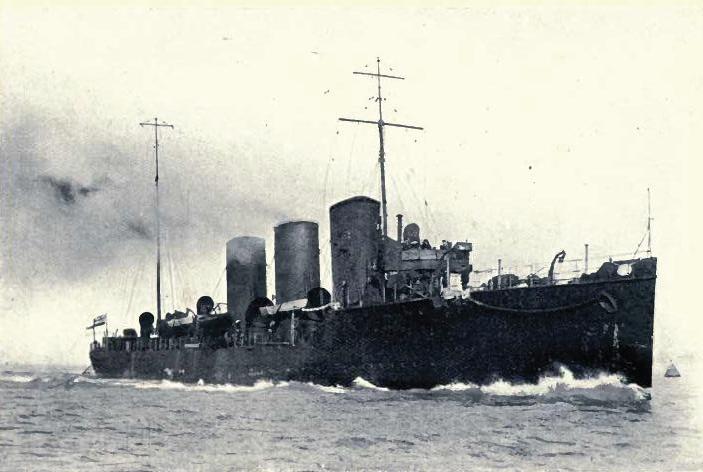
HMS Swift is very peculiar in the Royal Navy as the world’s largest destroyer of her time when launched in 1907. She was a pet project of Admiral “Jackie” Fisher which also pushed for submarines, and was the mastermind behind HMS Dreadnought and battlecruisers… among others. Design as a flotilla leader she was already larger that many unprotected cruisers in service when completed in 1908, and way faster, at least on paper. This unique destroyer leader design was envisioned as a large ocean-going destroyer, both destroyer, leader, and scout for a major fleet. But this ambitious plan was marred by many technical issues, so much so that she was derided as one of the worst ships ever designed. Nevertheless, she saw action in WWI, leading the 4th flotilla, the Dover patrol, and seeing action at the Battle of the Channel on 20 April 1917 and paid off after 1918. #royalnavy #destroyer #destroyers #britishnavy #lclass #hmsswift
At Admiral Fisher’s instigation the Controller asked DNC in October 1904 to produce a design for a destroyer based on the ‘River’ class but capable of 36kts, using turbines and oil or coal. The DNC’s reply was predictable; the hull weight was inadequate, as it was no more than 20t heavier than the previous turbine-driven destroyer (HMS Eden) and would have less strength than the 30-knotters. In January 1905 a revised design was rushed through at two hours’ notice: displacement was up to 1140t and 19,000shp would give 333kts. To meet the First Sea Lord’s request for 23kts more a second legend was prepared shortly afterwards: 1350t and 29,000shp. The specialist firms were not happy with the invitation to tender, particularly as they were given only four weeks to produce a design. Only after considerable argument was the Cammell Laird design accepted in December 1905, but with the builders’ proviso that many amendments would be needed. Guns were changed from 12pdr to 4in, sided on the forecastle and two on the centreline aft. The name Flying Scud was dropped in April 1906.
Trials proved that the design was over-ambitious, and despite endless changes of propellers, raising the funnels and other expedients she failed to reach her contract speed, and was good for just a fraction over 35kts. The cost was heavy oil consumption, over 27st per hour. The absurd speeds of 38-39kts quoted in contemporary reference books can only be attributed to official lies put about at the First Sea Lord’s instigation to cover up the failure of his favourite project. She was finally accepted in February 1920 after nearly two years of trials, and the Board graciously agreed to limit the penalties to £5000. In service she proved a good seaboat, but the full bow form and lack of flare made her wet. The flimsy bridge also made it hard for her to maintain full speed in a seaway, and the vast areas of steam pipes made her vulnerable to the smallest shells. Like Fisher’s other favourites she was technically interesting but at £233,764 was a very expensive solution to the problem.
In 1912 she became leader or Captain (D)’s ship, 4th TBD Flotilla, and with the ‘K’ class became part of the Grand Fleet in August 1914. She proved too frail for service in Northern waters, and in July 1915 she had a brief refit (Egerton sweep gear added) and went south to the Dover Patrol (6th DE). In 1916 she was re-armed with a 6in BL on the forecastle in place of the 4in guns. Badly damaged in action with German destroyers in the Channel on 20 April 1917 in company with Broke. Repaired and rejoined Dover Patrol in July without the 6in gun (replaced by 2-4in QF Mk V). Her bridge had been enlarged and strengthened in 1916. Remained at Dover until Armistice and then paid off.
Development
Fisher placed a specification to the Director of Naval Construction (DNC) in October 1904 for a 320 feet long (98 m) and 900 tons destroyer capable of 36 knots (67 km/h; 41 mph). The latter figure in particular was ludicrously high. Indeed, the previous River (E) class destroyers were revised down from 33 knots (never realized) of earlier destroyers of the A-D classes, to 28 knots in realistic combat operations. If some destroyers reached about 34 knots abroad, this was only on trials. That speed, Fisher thought, would set a new standard for torpedo boat destroyers, their initial mission, but they would be able to hunter down orther destroyers as well and screen for the new Dreadnoughts and especially battlecruisers, he hope would soon reach speeds in excess of 26 knots.
The DNC replied that a 900t design to achieve these speeds was not strong enough and proposed a revised design in 1905, which not only was down to 33.5 knots (62.0 km/h; 38.6 mph) combat speed (meaning fully loaded) and argued that it would need 19,000 shp (14,000 kW) and to shohorn this massive powerplant the hull needed to be at least dispacing 1,400 t standard. But it was followed by a 36 knots designed based on 1,350 tons hull with a larger machinery rated for 29,000 shp (22,000 kW). From there, Fisher proposed a tender to all yards interested. The prospect of building such revolutionary ship was both enticing (for publicity) and challenging. In the past the yards overpromised on speed and this even led to dubious claims.
Worst still, the yards that would be interested had only four weeks to produce their tender. Those who answered were Cammell Laird, Thornycroft, Fairfield, John Brown and Armstrong Whitworth, already experienced with destroyers. Others declined. But they all failed to meet the requirements and it was done at high cost, such as Armstrong’s record £284,000, (£139,881 for HMS Afridi, Tribal class). This led to revised specs and a final design agreed by mid-December 1905, and this time, only Cammell Laird remained, accepted to take on the order but taking provisions of future needed amendments to the contract.
The final Cammell design was huge for destroyer standards, measuring 340 feet (100 m) for 1,680 tons (350 tonnes more than the initial revised design). She was still lightly armed for her size, with just four Mark VIII 4-inch guns, two 18-inch (457 mm) torpedo tubes, but this was on contract. The powerplant was supposed to deliver an output of 30,000 shp (22,000 kW) based on four oil-fired Parsons steam turbines, mated on a shaft each. Twice as much power and shafts than in any destroyer of the time. Final price as agreed upon was still a hefty £236,000. As ordered she was at first called the “Flying Scud” but this was changed to the more marketable “Swift” in April 1906. However time to gather resources and reserve a drydock, she was only laid down by December 1906 and launched on 7 December 1907, so about after a year, which was reasonable.
The Admiralty included in the first congtract agreed upon by Cammell Laird a prime of £18,000 for every knot reached above 36 knots. In trials over a measured mile at Skelmorlie, by March 1909 however, Swift experienceda humiliating serie of engine and mechanical failures. At best and over a very short run, she reached 35.099 knots while guzzling an enormous 27.5 tons/hour over her full 180 tons coal stock. This meant in case of a sortie she could not remained with the fleet for more 24h at best and still cruise along. Later trials after many fixes at Laird, went on up to September 1909, and in total some 26 propeller designs were tested in order to meet the required speed. It’s clear she never reached 36 knots as the Admiralty accepted her for £236,764, withdrawing £44,240 in penalties for not reaching the contracted speed, plus a past schedule delivery. Discussions with the reluctant builder reduced this to £5,000 in penalty. Reports however mentioned 38 knots, and this was taken over by the press as a new world record. But Swift had serious issues as a destroyer and remained unique in her class. Too coostly, unwieldy, under-armed, with short range, too slow, she was never at the height of what imagined Fisher. Arthur Wilson wrote about her:
“I do not think we require any repetition of Swift in the immediate future.”
Antony Preston described her as “very expensive and disappointing outcome”.
Design of the class
Hull and general design
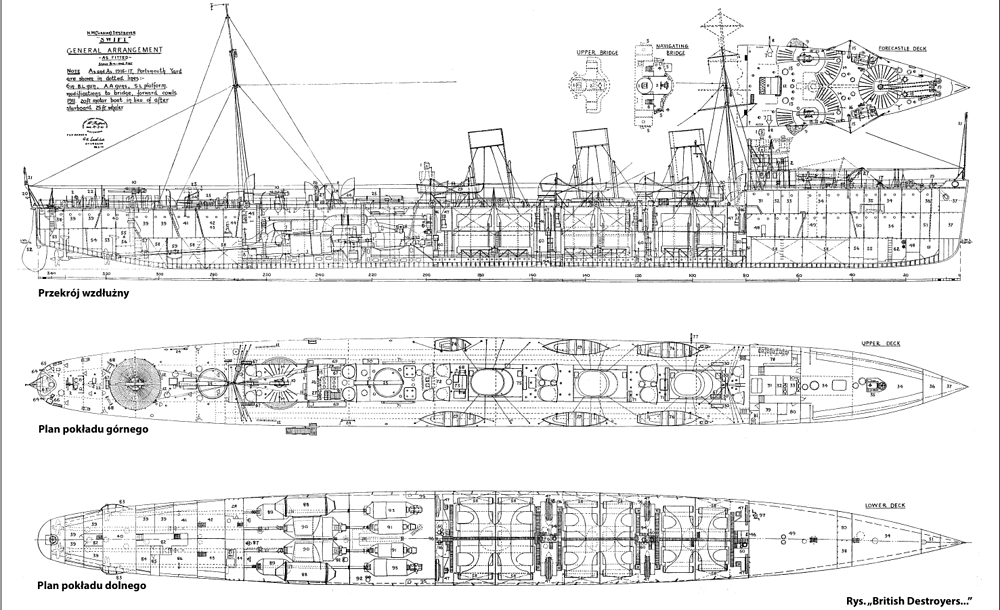
HMS Swift was rather classic in shape still. She was not very far from a Tribal class, albeit scaled up obviously. Her displacement was 1,825 long tons (1,854 t), and dimensions reached 353.75 ft (107.8 m) overall, for a record beam of 34.5 ft (10.5 m) and yet a reduced draught of 10.5 ft (3.2 m). Her forecastle represented about 1/3 of her total lenght, and she had a relatively tall freeboard, a near-straight stem with bulwark, fine entry lines and a constant curved hullreaching her breatest beam past amidship (3rd funnel level) and a rounded, straight prow with stern top-hinged tall rounded rudder. There were four shafts and their struts as a marking feature, three large funnels close together aft of the forecastle, raked as the masts, a short foremast and tall main mast supporting wireless telegraphy cables. She had a small bridge similar to the one on early destroyers, open with chadburn and communication pipes, with the steering wheel cabin underneath.
To bring air into the massive machinery spaces, all separated, there were no less than 14 large air intakes.
The crew amounted to 138 officers and men, significantly more than a standard destroyer at the time. They couild leave the ships using the six pinnaces and sloops under davits alongside the funnels. There were four main guns, two in the axis aft, including one in front of the mainmast and two paired forward on the forecastle.
Powerplant
The sticking feature of the design was its massive powerplant, which included four Parsons turbines, same types used in the Tribals, mated and fed by twelve Yarrow-type Laird (home built) water tube boilers for a grand total of 30,000 shp (22,000 kW). Official speed, at best of her abilities, remained at 34 knots (63 km/h; 39 mph). Range was 2335 nmi at 15 knots cruise speed, not catastrophic, but it plummited at higher speeds. Her engine troubles never were completely cured during her career. If she was relatively stable, with a predictable roll, she bled speed enormously when hard turning at full speed, and was also unresponsive at the helm. So much so that it was tried to vary the speed of her left-right shafts groups to see if it could be improved.
Armament
As built, HMS Swift was given as said above four 4-in (102 mm) guns on the positions given, two in the axis aft and two paired forwards. She also had a single 2-pdr (40 mm (1.6 in)) AA gun and two single 18 in (450 mm) torpedo tubes, which were ludicrously weak for her size and tonnage, but conform with her initial requirements. It was changed however to reflect her displacement in 1917.
Indeed, by 1910 whe completed and commissioned, she was considered too large to operate with existing destroyers and torpedo boats and on the other hand her machinery layout, poorly agenced due to the imperative of speed on the limited displacement, made it vulnerable to even light gunfire. Still, her first captain thought she will be an amazing scout ship and indeed maintained a good seakeeping compared to oher destoryers, as well as accelerated fast. She was also fitted with the latest wireless set in the inventory, longer range than her contemporaries. But the admirakty only lookd at her eye-watering price tag to argue she would remain alone. She was the largest British destroyer before the 1937 Tribal-class.
Main: 4x BL 4-inch Mark VIII naval guns
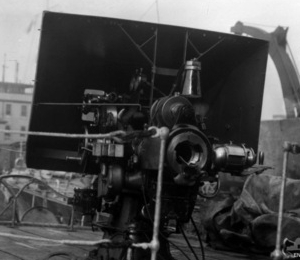 The BL 4-inch Mark VIII naval gun was a medium-velocity (2,287 feet per second (697 m/s)) wire-wound model introduced in 1908 to deal with torpedo boats and light enough for destroyer decks incompatible with the more powerful Mk VII gun. It weighted 2,912 pounds (1,320 kg) barrel & breech with a shield in some cases, for a 4 inches (101.6 mm) barrel length of 159.2 inches (4.044 m) bore (40 calibres) and fired up to 6-8 tpm, a 31 pounds (14.06 kg) Common pointed, Common lyddite HE shell using a Welin, single-motion screw breech on a -10° to +20° mount allowing a max range of 10,210 yards (9,340 m).
The BL 4-inch Mark VIII naval gun was a medium-velocity (2,287 feet per second (697 m/s)) wire-wound model introduced in 1908 to deal with torpedo boats and light enough for destroyer decks incompatible with the more powerful Mk VII gun. It weighted 2,912 pounds (1,320 kg) barrel & breech with a shield in some cases, for a 4 inches (101.6 mm) barrel length of 159.2 inches (4.044 m) bore (40 calibres) and fired up to 6-8 tpm, a 31 pounds (14.06 kg) Common pointed, Common lyddite HE shell using a Welin, single-motion screw breech on a -10° to +20° mount allowing a max range of 10,210 yards (9,340 m).
AA:1 x 2-pdr (40 mm (1.6 in)) AA gun
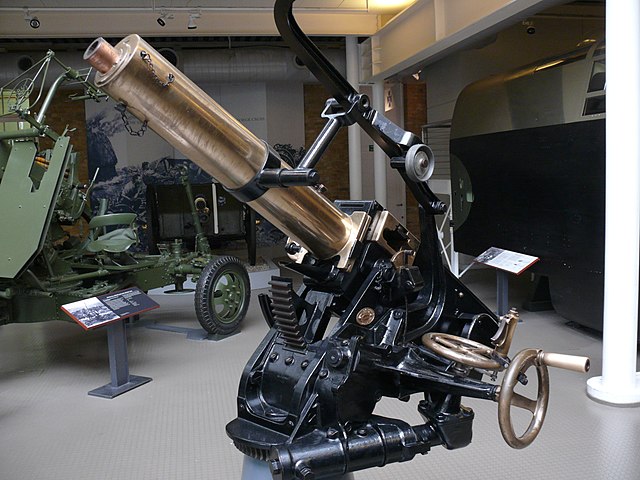
This was a famous scaled up version of Harold Maxim’s famous “devil’s painbrush”. The QF 1-pdr Mark I, first “pom-pom” of the name was deployed during WWI as a prime AA gun, notably installed on trucks and became the go-to light AA gun in the RN outside the 75 mm DP.
⚙ specs. QF 1-pounder pom-pom Mark I |
|
| Weight | 410 pounds (186.0 kg) (gun & breech) |
| Barrel lenght | 6 ft 1 in (1.85 m)/barrel 3 ft 7 in (1.09 m) (bore) L/29 |
| Elevation/Traverse | |
| Loading system | Action: Automatic recoil/feed |
| Muzzle velocity | 1,800 ft/s (550 m/s) |
| Range | 4,500 yards (4,110 m) |
| Guidance | |
| Crew | |
| Round | 37 x 94R Common Shell 1 lb (0.45 kg) 37 mm (1.457 in) 270 grains (17 g) black powder |
| Rate of Fire | ~300 rpm (cyclic) |
2x 18-in TTs
HMS Swift only had two single torpedo tubes but twelve reloads. The torpedo model was likely the whitehead Mark VII or VII* (1908): Introduced on the 1905 Tribal class destroyers.
Warhead : 320 lb (150 kg) TNT, seetings on Mark VII* 29 knots (54 km/h; 33 mph) for 7,000 yd (6,400 m) or 35 knots (65 km/h; 40 mph) for 5,000 yd (4,600 m), powered by Wet-heater.
Modernization


From war-book.ru, 1913 dark livery and 1917-18 apparearance
Following her 1917 refit she saw the installation of a single 6-in (152 mm) standard shieled light cruiser gun, with some necessary deck reinforcements, but she kept her two aft deck axial 4-in guns and gained a single 2 pdr AA gun, she also kept her two 18-in torpedo tubes however her bridge was completely rebuilt and buffed up. She gained a new enclosed bridge atop the steering wheel cabin and a new open bridge was built above.
⚙ specifications as built |
|
| Displacement | 1,825 long tons (1,854 t) |
| Dimensions | 353.75 x 34.5 x 10.5 ft (107.8 x 10.5 x 3.2 m) |
| Propulsion | 4x shafts steam turbines, 12 Yarrow-type Laird water tube boilers 30,000 shp (22,000 kW) |
| Speed | 34 knots (63 km/h; 39 mph) |
| Range | 2335 nm/15 kts |
| Armament | 4× 4 in, 1× 2 pdr AA, 2× 18 in torpedo tubes |
| Crew | 138 |
HMS Swift in service
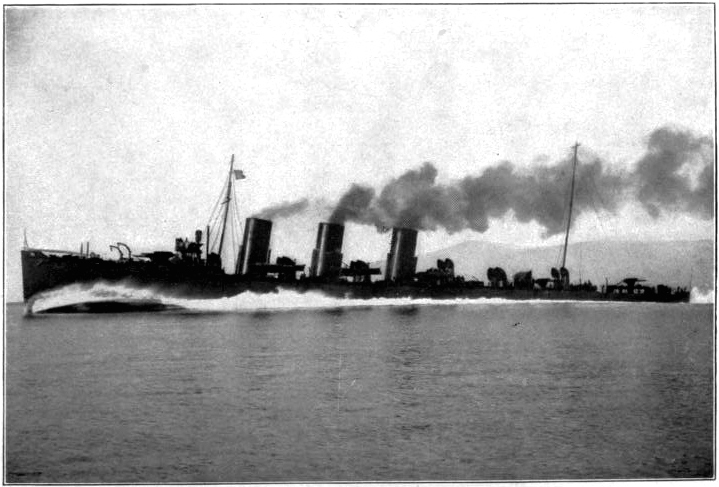
HMS Swift was commissioned by August 1910, five years after being laid down, delayed due to repeated failures in meeting her design speed. From 1911 to the summer of 1914 she trained wit the fleet, but was less engaged after 1912 due to her high maintenance and running costs. As the war broke out she became the leader of the 4th Torpedo Boat Destroyer Flotilla, Grand Fleet. By October 1914, Swift left Scapa Flow, out sea to locate the previously signalled protected cruiser HMS Hawke missing from patrol. She only founf one of her rafts with one officer on board and 21 sailors, telling that they had been torpedoed and sunk by a German U-boat, and there were other scattered survivors. However due to the extreme weather in this season, Swift was aobliged to fold up afterwards.
In 1915 she had a first a short refit, reassigned to the Dover Patrol and by 1916 her two forward 4-inch guns were swapped for a single BL 6-inch Mk VII gun, placed on a P Mk III mount like the Tribal-class HMS Viking, making them both the most heavily armed destroyers in the inventory. Unlike Viking, Swift’s bulk and buoyancy better coped with the added weight and she was satisfactory in this arrangement. Compared to the puny-4-in, the 6-in had more than twice the range and impact, but this was not a happy marriage. The admiraltyu indeed feared an encounter with 10.5 cm (4.1-in) SK L/45 armed Hochsee Torpedo Boote. The decks were reinforced, and there were additional bridge structures for two anti-aircraft guns (either 1-pdr or two 2-pdr).
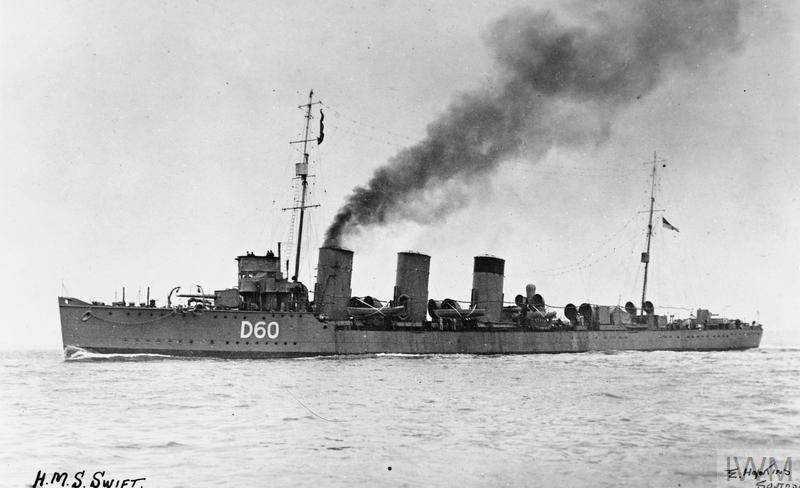
HMS Swift showing the pennant D60 after her refit in 1916 (IWM)
On the night of 20–21 April 1917, under command of Ambrose Peck with the leader HMS Broke, she stumbled upon a force of six German destroyers in what became the Battle of Dover Strait (one of many). The confusion did not allowed precuise records, but the crew claimed she hit G 85 with a torpedo just as HMS Broke rammed G 42 and became entangled in her hull. The last destroyed fled. HMS Swift pursued her but took its and here captain decided to slow down and ultimately fold up, returning to assist Broke and rescue survivors of G 42. Plymouth. Due to the poor performance of the 6-inch gun, as she was repaired by May 1917 it was exchanged for two of the latest QF 4-inch Mk V. In the spring of 1918 she was stationed with the Offshore Squadron and prepared for the First Ostend Raid which never followed for her. She was eventually rarely asked any missions until the end of the war and was decommissioned swiftly after, Sold for BU up 9 December 1921.
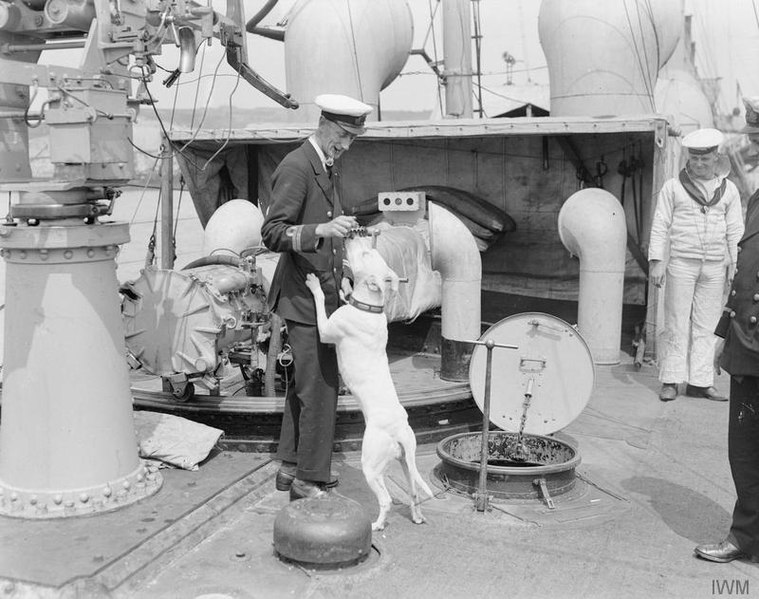
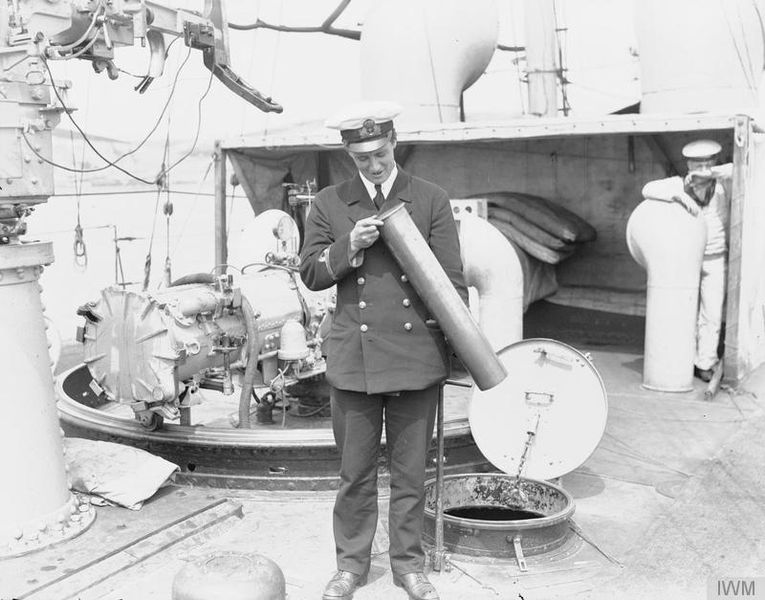
After the action of Dover: Top, The Royal Navy on the Home Front, 1914-1918 Lieutenant King Harman, awarded the Distinguished Service Cross, with William the Hun, the mascot of the Royal Navy’s destroyer leader HMS Swift. William has been through three actions and these are inscribed on his collar: Jutland, May 31st 1916, Channel Raid, October 26th 1916 and Channel Raid, October 21st 1917. Bottom, A German shell case salvaged on board the Royal Navy’s destroyer leader HMS Swift after action on the Channel.
Read More/Src
Books
Rickard, John (3 December 2020). “HMS Swift (1907)”. HistoryOfWar.org.
Destroyers of the Royal Navy, 1893-1981, Maurice Cocker, 1983, Ian Allan
Destroyers, Antony Preston, 1977, Bison Books
Jane’s Fighting Ships, 1919, Jane’s Publishing
Conway’s All The World’s Fighting Ships 1906-1921 1985, Conway Maritime Press p.73
The World’s Worst Warships, Antony Preston, 2002, Conway Maritime Press,
Links
dreadnoughtproject.org/
historyofwar.org/
en.wikipedia.org/
commons.wikimedia.org/
war-book.ru/
Videos
Famous blacktail video, to take with a pinch of salt…
Model Kits
HMS Swift – 1907 Combrig 1:700 70649 700-04
HMS Swift U-Boat-Laboratorium 1:700 700-04

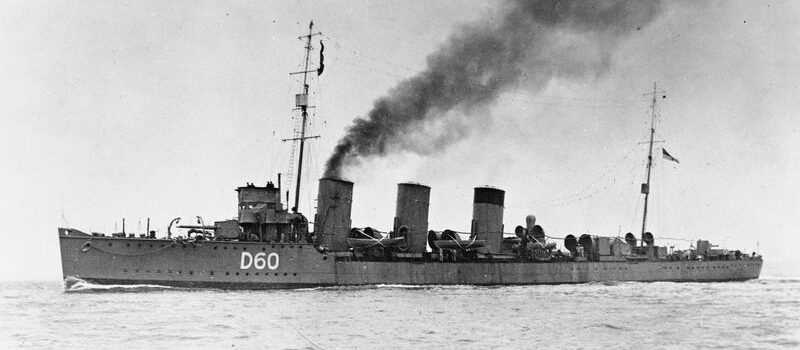
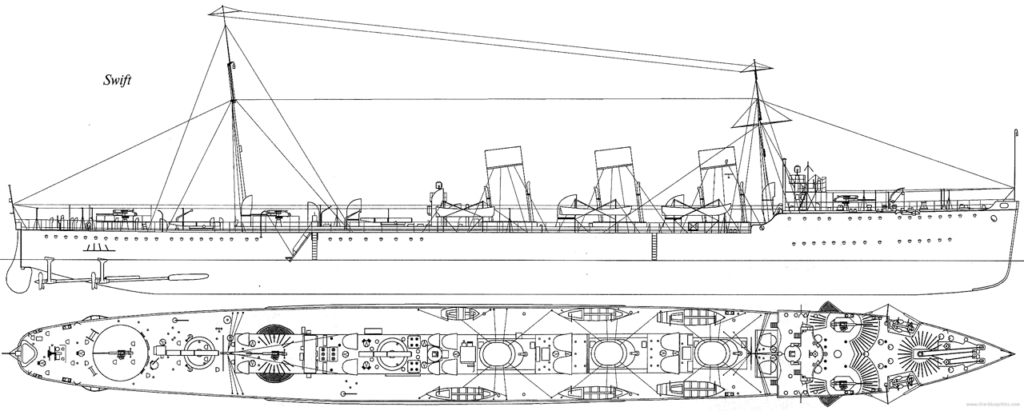
 Latest Facebook Entry -
Latest Facebook Entry -  X(Tweeter) Naval Encyclopedia's deck archive
X(Tweeter) Naval Encyclopedia's deck archive Instagram (@navalencyc)
Instagram (@navalencyc)





 French Navy
French Navy Royal Navy
Royal Navy Russian Navy
Russian Navy Armada Espanola
Armada Espanola Austrian Navy
Austrian Navy K.u.K. Kriegsmarine
K.u.K. Kriegsmarine Dansk Marine
Dansk Marine Nautiko Hellenon
Nautiko Hellenon Koninklije Marine 1870
Koninklije Marine 1870 Marinha do Brasil
Marinha do Brasil Osmanlı Donanması
Osmanlı Donanması Marina Do Peru
Marina Do Peru Marinha do Portugal
Marinha do Portugal Regia Marina 1870
Regia Marina 1870 Nihhon Kaigun 1870
Nihhon Kaigun 1870 Preußische Marine 1870
Preußische Marine 1870 Russkiy Flot 1870
Russkiy Flot 1870 Svenska marinen
Svenska marinen Søværnet
Søværnet Union Navy
Union Navy Confederate Navy
Confederate Navy Armada de Argentina
Armada de Argentina Imperial Chinese Navy
Imperial Chinese Navy Marinha do Portugal
Marinha do Portugal Mexico
Mexico Kaiserliche Marine
Kaiserliche Marine 1898 US Navy
1898 US Navy Sovietskiy Flot
Sovietskiy Flot Royal Canadian Navy
Royal Canadian Navy Royal Australian Navy
Royal Australian Navy RNZN Fleet
RNZN Fleet Chinese Navy 1937
Chinese Navy 1937 Kriegsmarine
Kriegsmarine Chilean Navy
Chilean Navy Danish Navy
Danish Navy Finnish Navy
Finnish Navy Hellenic Navy
Hellenic Navy Polish Navy
Polish Navy Romanian Navy
Romanian Navy Turkish Navy
Turkish Navy Royal Yugoslav Navy
Royal Yugoslav Navy Royal Thai Navy
Royal Thai Navy Minor Navies
Minor Navies Albania
Albania Austria
Austria Belgium
Belgium Columbia
Columbia Costa Rica
Costa Rica Cuba
Cuba Czechoslovakia
Czechoslovakia Dominican Republic
Dominican Republic Haiti
Haiti Hungary
Hungary Honduras
Honduras Estonia
Estonia Iceland
Iceland Eire
Eire Equador
Equador Iran
Iran Iraq
Iraq Latvia
Latvia Liberia
Liberia Lithuania
Lithuania Mandchukuo
Mandchukuo Morocco
Morocco Nicaragua
Nicaragua Persia
Persia San Salvador
San Salvador Sarawak
Sarawak Uruguay
Uruguay Venezuela
Venezuela Zanzibar
Zanzibar Warsaw Pact Navies
Warsaw Pact Navies Bulgaria
Bulgaria Hungary
Hungary

 Bundesmarine
Bundesmarine Dutch Navy
Dutch Navy Hellenic Navy
Hellenic Navy Marina Militare
Marina Militare Yugoslav Navy
Yugoslav Navy Chinese Navy
Chinese Navy Indian Navy
Indian Navy Indonesian Navy
Indonesian Navy JMSDF
JMSDF North Korean Navy
North Korean Navy Pakistani Navy
Pakistani Navy Philippines Navy
Philippines Navy ROKN
ROKN Rep. of Singapore Navy
Rep. of Singapore Navy Taiwanese Navy
Taiwanese Navy IDF Navy
IDF Navy Saudi Navy
Saudi Navy Royal New Zealand Navy
Royal New Zealand Navy Egyptian Navy
Egyptian Navy South African Navy
South African Navy






























 Ukrainian Navy
Ukrainian Navy dbodesign
dbodesign